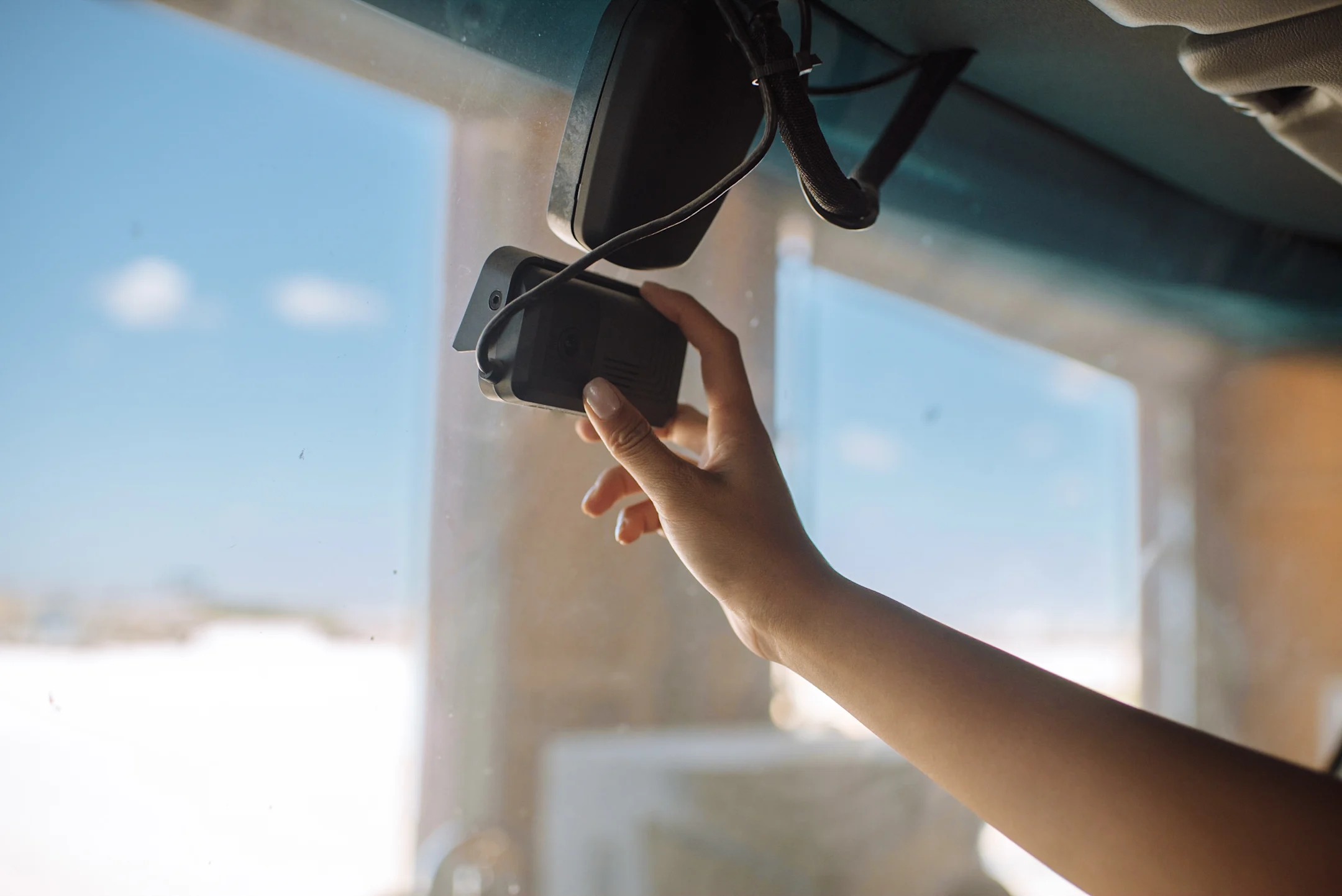- Understand the Technology
- Evaluate Your Options
- Select the Right Vendor
Why invest in dash cams?
If you manage a fleet of vehicles and haven’t invested in dash cams yet, now might be the time. Dash cams enable a robust fleet safety program and drive measurable ROI for your business.

How dash cams work
Dash cams are cameras that can be installed in a vehicle to capture footage of the road ahead and activity inside the cab. The best dash cams are connected to a telematics solution with built-in GPS and a g-sensor, so the system can automatically detect safety-related events—like harsh braking, harsh turning, and collisions—and upload incident footage to the cloud. There are a variety of different types of dash cams that can be deployed for various purposes, but generally fleets install dash cams because they’re looking for better visibility into on-the-road safety, the ability to coach drivers in real time, and footage that they can use to exonerate innocent drivers in case of an accident.
Why are dash cams worth the cost?
One of the biggest objections to investing in dash cams is the cost. Although the initial cost of dash cams might seem expensive, video-based safety solutions have been proven to reduce overall fleet operating costs and quickly pay for themselves. In fact, the NSTSCE found that when combined with driver coaching, dash cams reduced safety-related events by 52%.
Learn more about the ROI of dash cams
See how much money your fleet could save by rolling out a video-based safety solution.
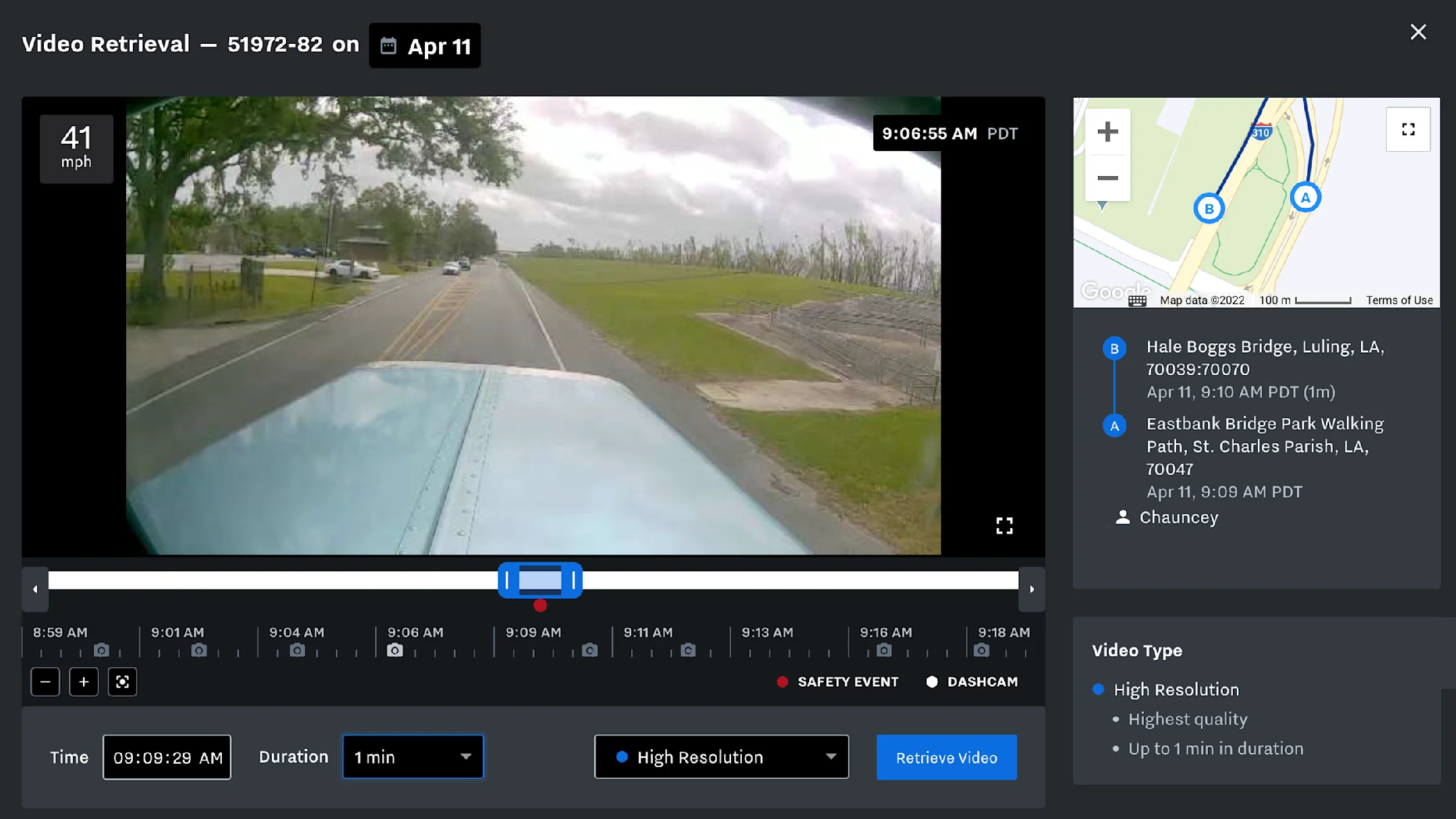
The benefits of dash cams for fleets
Before diving into the different types of dash cams, it’s important to take a step back and understand why commercial fleets are investing in this technology. Below, check out the four major benefits of dash cams.
- Avoid False Claims
- Lower Insurance Costs
- Reduce Vehicle Wear and Tear
- Minimize Labor Costs
Avoid false claims
In car-truck accidents, trucks are only at fault about 26% of the time—but they get blamed far more often. Internet-connected dash cams can auto-upload incident footage to the cloud within minutes, making it easy to exonerate innocent drivers on the spot, bypass lengthy claims processes, and eliminate unnecessary payouts.
Lower insurance costs
When it comes to insurance premiums, safety is a big factor. Because dash cams are proven to improve safety and mitigate risk, your insurance company may offer a premium discount, credit, or subsidy for installing Samsara AI Dash Cams and sharing safe driving data.
Minimize labor costs
It might be surprising, but dash cams can reduce labor costs in a few different ways. With digital driver safety scorecards and video-based coaching tools, your back office team can coach drivers more efficiently. Plus, dash cams make it possible to create a robust rewards program, which is proven to increase engagement and retention, leading to lower turnover and hiring costs.




Avoid false claims
In car-truck accidents, trucks are only at fault about 26% of the time—but they get blamed far more often. Internet-connected dash cams can auto-upload incident footage to the cloud within minutes, making it easy to exonerate innocent drivers on the spot, bypass lengthy claims processes, and eliminate unnecessary payouts.
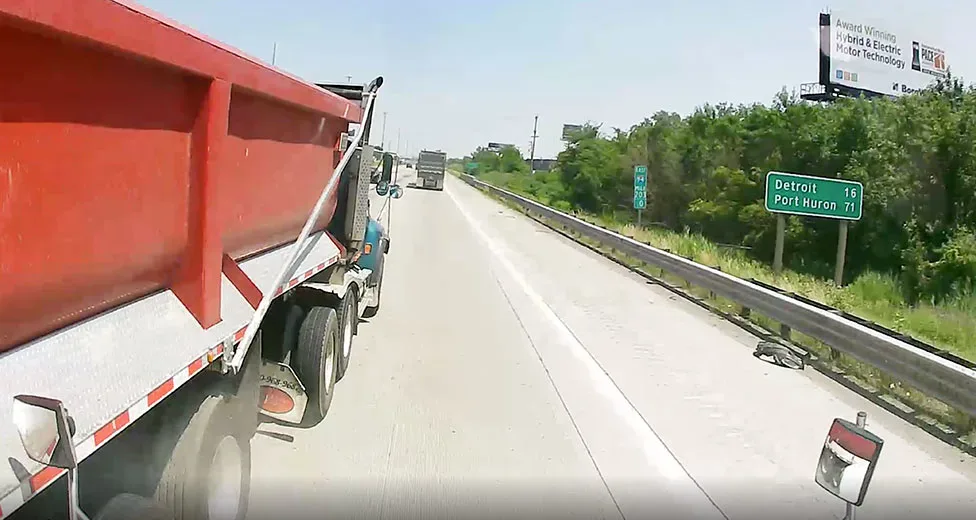
Lower insurance costs
When it comes to insurance premiums, safety is a big factor. Because dash cams are proven to improve safety and mitigate risk, your insurance company may offer a premium discount, credit, or subsidy for installing Samsara AI Dash Cams and sharing safe driving data.

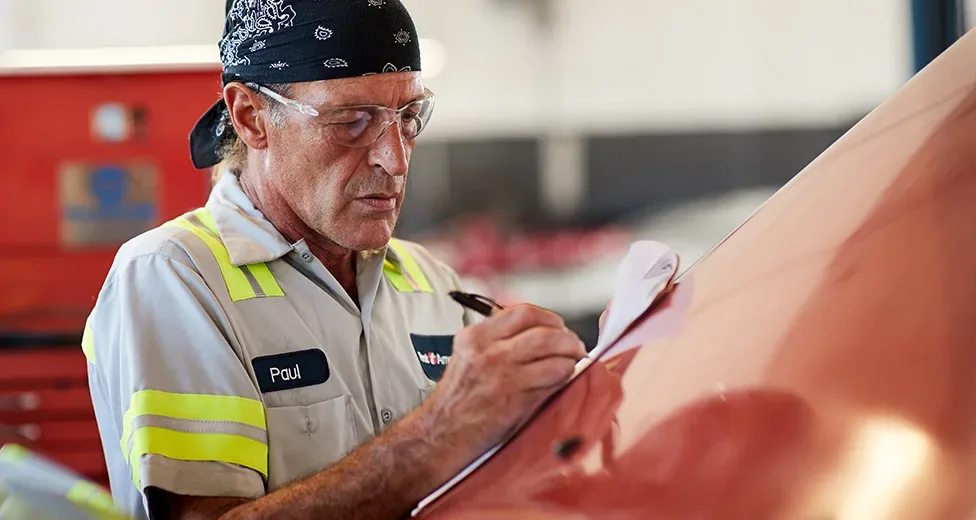
Minimize labor costs
It might be surprising, but dash cams can reduce labor costs in a few different ways. With digital driver safety scorecards and video-based coaching tools, your back office team can coach drivers more efficiently. Plus, dash cams make it possible to create a robust rewards program, which is proven to increase engagement and retention, leading to lower turnover and hiring costs.
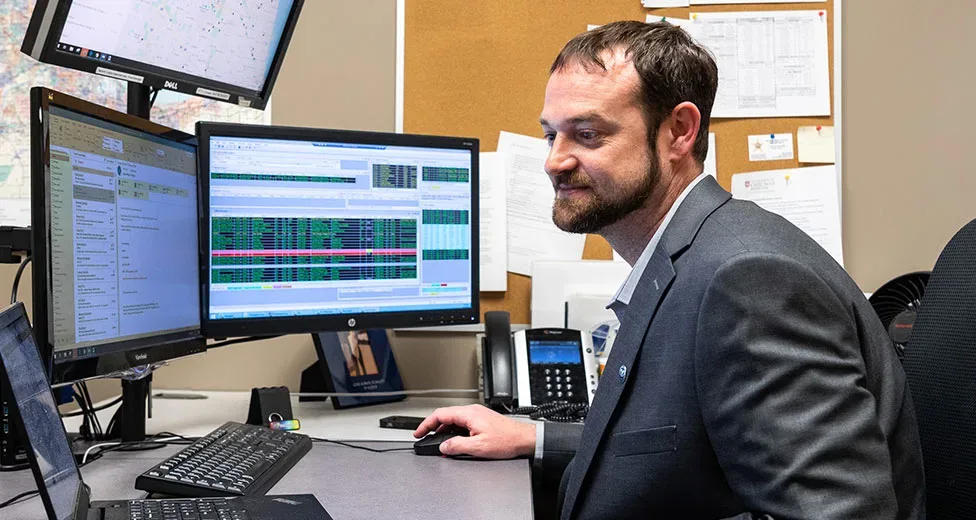
The different types of dash cams
Dash cams aren’t one-size-fits-all. There are a variety of different types of dash cams available which offer varying specs and functionality—but some are better suited for commercial fleets than others.
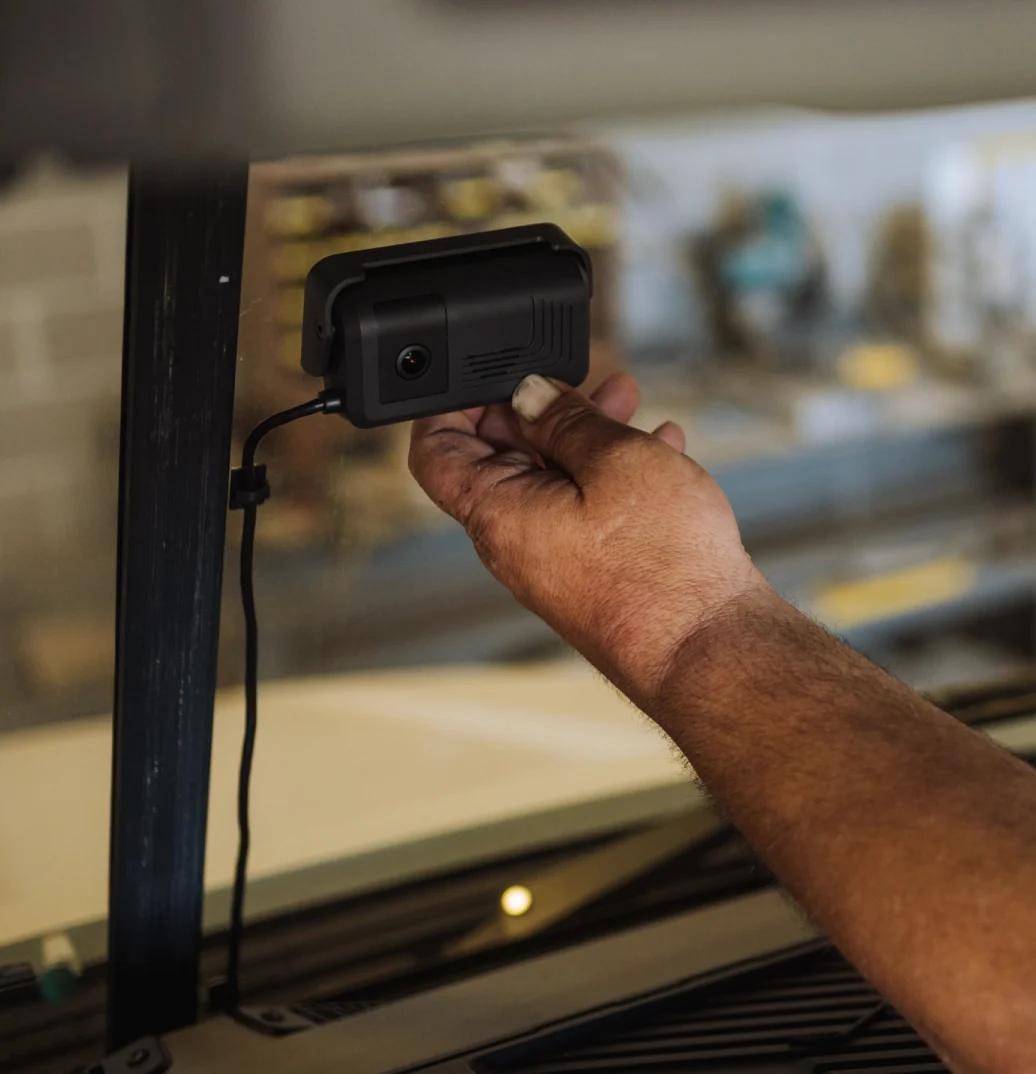
Dash cams for consumers vs. commercial fleets
If you Google "dash cams," you're likely to find dash cams meant for consumers on websites like Amazon. Some of the most popular consumer dash cam brands include Sony, Thinkware, Vantrue, Viofo, Nextbase, BlackVue, and Garmin dash cams. While these are top picks for enthusiasts looking to install an inexpensive camera in their personal vehicle, they’re not meant for commercial fleets. They usually have a memory card that must be manually retrieved to download footage, posing logistical challenges for fleets managing multiple vehicles and drivers.
Dash cams for commercial fleets are more robust—both in terms of the features they offer and the value they can provide. Dash cams that are purpose-built for commercial fleets, like Samsara AI Dash Cams, connect to a telematics device that provides WiFi and can detect safety-related events like harsh braking, speeding, and collisions. That way, these dash cams can auto-upload video footage from safety-related events to the cloud, making it easy for your back-office staff to review safety-related events and coach drivers effectively.
Different camera configurations
Forward-Facing
Dual-Facing
Exterior
Interior
Designed to capture collisions, forward-facing dash cams (or front cameras) are mounted on your windshield and have one lens that faces the road ahead. Many fleets choose forward-facing dash cams because they want dash cam videos for coaching and exonerating drivers but are concerned about getting driver buy-in. These dash cams don’t record the inside of the cab, so they are ideal for fleets with privacy concerns
Different dash cam system features
Once you decide what configuration best fits your needs, you’ll also want to consider the variety of different features available. From artificial intelligence (AI) to night vision, here are a few of the most important dash cam system features to consider.
The most advanced dash cam systems include built-in artificial intelligence (AI), so they can detect safety issues without a g-force trigger—like distracted driving and drowsiness. AI makes it possible to coach drivers on risky behavior and near misses.
Most dash cam systems have a micro SD card or memory card that stores footage locally, but more advanced dash cam systems can connect to the internet via high-speed cellular connections that let you send footage to the cloud, providing nearly instant access to footage.
The best dash cam systems connect to a telematics device with a built-in gyroscope and accelerometer to automatically detect harsh driving events—like harsh braking or a collision—and auto-upload footage to the cloud.
Some dash cam systems include built-in speakers that can play verbal and/or audio alerts when unsafe driving behavior is detected, like mobile phone use, speeding, and drowsiness. You may also be able to turn on recording to capture audio during safety events.
Field of view is how much of the road (or inside of the cab) the dash cam system can see. To ensure your dash cam system captures a broad field of view, look for a wide angle or semi-wide angle lens.
Resolution (or image quality) depends on how many pixels the dash cam system records. High quality forward-facing dash cam systems should record video in high-resolution 1080p full HD. 1080p dash cams make it possible for you to see the road ahead clearly and make out numbers on license plates.
The two most popular ways to install dash cam systems are via a suction cup (or suction mount) or via adhesive. Some dash cam systems may also attach to your rear view mirror. Adhesive attachments are generally a more secure option that still offer quick and easy installation.
Some dash cam systems are optimized for capturing footage at night or in low-light conditions. If your drivers often operate at night, look for a dash cam system with infrared LED, which is particularly important for capturing video footage of unlit cabs.
What to look for in a dash cam platform
With so many dash cam vendors on the market, it’s impossible to try every single option. How can you narrow it down? Here are a few things to consider when selecting the best dash cam solution that will be worth it for your fleet.
Why Samsara
Samsara Customer Safety Survey Results
>50%
of Samsara dash cam customers have exonerated a driver in the past year
90%
of customers say Samsara has improved safety within their fleet
Internet connectivity
Internet connectivity is key for any fleet that wants to use dash cams as a proactive safety tool. Without internet connectivity, dash cams can only store footage on a local memory card—meaning someone has to manually retrieve the footage from the vehicle. On the other hand, dash cams that are connected to a telematics device with WiFi and cell service can auto-upload event footage to the cloud. This makes it possible for fleet managers to coach and exonerate drivers in real time.
Everything you need in one integrated platform
When evaluating dash cam solutions, look for an integrated platform that offers dash cams and connected driver and admin apps in one, unified solution. Why? Beyond consolidating your tools and simplifying your workflows, an all-in-one platform connects the dots between your data, unlocking better insights and larger safety improvements.
By integrating AI Dash Cams, telematics, and cloud-based software, Samsara’s Video-Based Safety solution helps fleets make measurable safety improvements and provides ROI in the moments that matter. In a survey of more than 500 Samsara customers, 90% said Samsara’s Video-Based Safety solution has helped improve safety within their fleet. And many Samsara customers across both the private and public sector, such as the City of Allentown, have saved $1 million or more through their safety programs with Samsara.
Currently evaluating dash cam solutions? Request a free trial of Samsara today to see how an all-in-one platform can improve the safety of your fleet.
Benefits of an All-in-one Platform
Advanced Incident Detection
8 dash cam features you need to have
A few of the most important features to look for when selecting a dash cam.
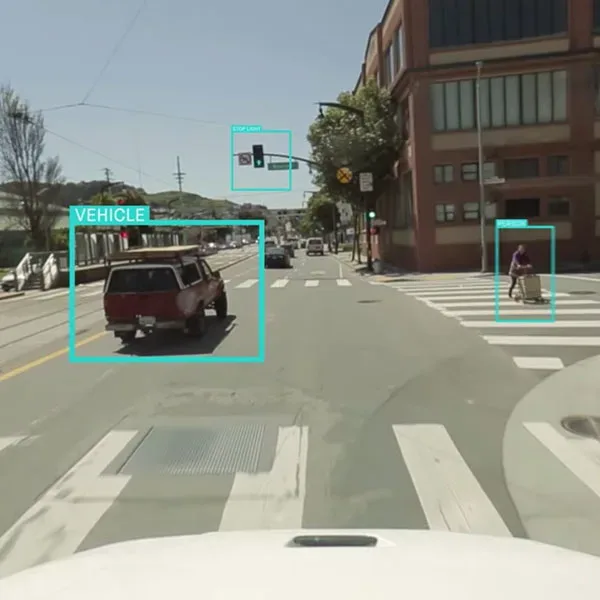

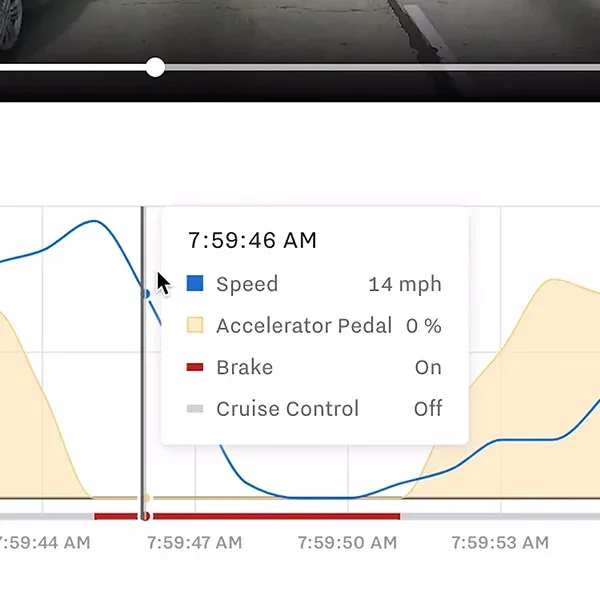
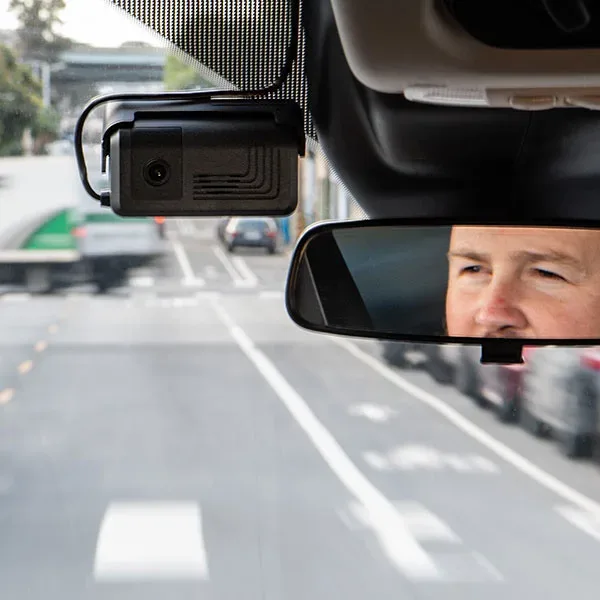
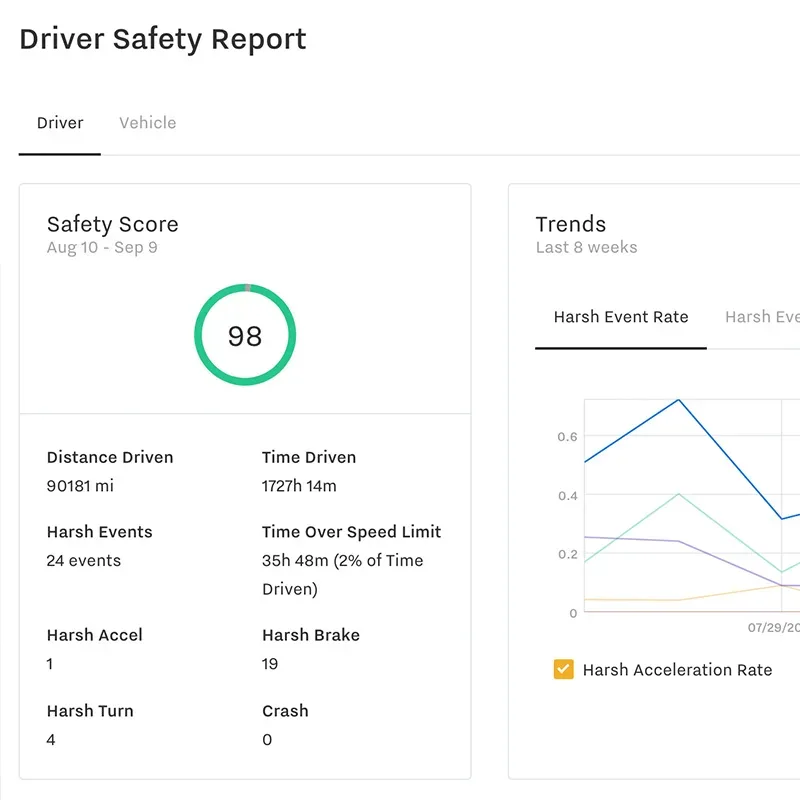


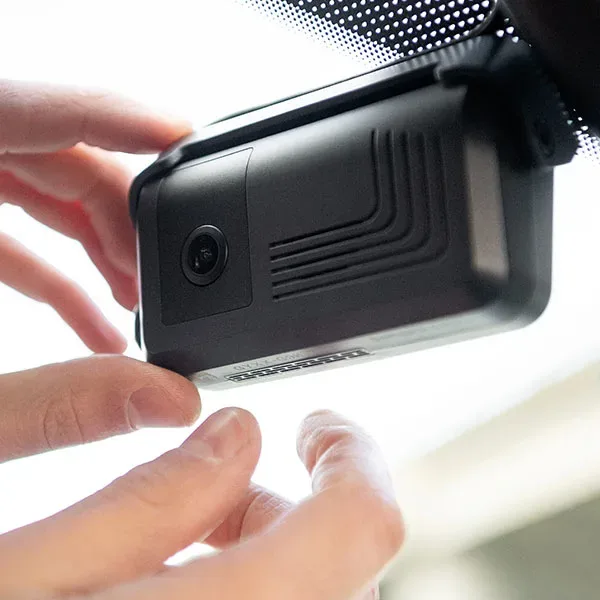

Built-in AI features
Artificial intelligence (AI) is the cutting-edge of dash cam technology. Samsara AI Dash Cams use computer vision to analyze the road and driver behavior in real-time—making it possible to detect risky behaviors like drowsiness and even warn drivers of an impending collision, helping prevent accidents before they happen.

Internet Connectivity
If your dash cam isn’t internet-connected, you will have to manually retrieve it from the vehicle to review or use any footage. Not only is this inconvenient—it also poses a security risk, since the footage is stored locally. Internet-connected dash cams are more secure and can automatically upload safety-related event footage to the cloud, making it possible to coach and exonerate drivers in real-time.

Harsh Event Detection
Make sure to choose a dash cam solution that connects to a telematics device with gyroscope and accelerometer data. This way, the system can detect harsh braking, harsh turning, harsh acceleration and collisions.

In-Cab Alerts
The best dash cams have a built-in audio speaker that can alert drivers to potential unsafe behavior in real-time. Immediate feedback from in-cab voice coaching is proven to improve driver behavior and help reduce preventable accidents.

Streamlined Coaching Tools
When it comes to choosing the best dash cam, software is just as important as hardware. Look for a solution that helps you make sense of your raw data and footage—with tools that aggregate coachable events, make it easy to coach drivers with suggested scripts, and track safety trends and improvements over time.

HD Video Quality
Crisp video quality is critical when reviewing video footage. For optimal quality, look for a dash cam with a wide-angle lens or high dynamic range (HDR) that offers full HD video. Consider FHD or HD 1080p video if you want resolution strong enough to read license plates and detect whether drivers’ eyes are open or closed.

Low-Light or Night Vision
If your drivers often operate at night, choosing a dash cam with low-light or night vision capabilities is extremely important. Look for a dash cam with HDR and infrared LED to ensure nighttime footage is still crisp and clear.

Plug-and-Play Installation
Deploying dash cams in dozens, hundreds, or even thousands of vehicles is no easy feat—which is why choosing hardware that’s easy to install is so important. The best dash cams include an adhesive strip and adjustable viewing angle for easy installation on your windshield, as well as no hard-wiring into your vehicle.








Change management guide
Best Practices for Building a Video-Based Safety Program
Learn how Samsara can help you implement a successful fleet safety program from start to finish. This step-by-step change management guide includes implementation best practices, easy-to-follow checklists, safety policy recommendations, and success stories from Samsara customers.
Get Your Guide
Make fleet safety a priority with Samsara
Samsara offers an all-in-one platform for improving fleet safety, empowering drivers, and reducing costs.

Protect drivers in the moments that matter with Samsara AI Dash Cams, which empower fleet drivers to build safe habits with real-time coaching. Samsara’s robust coaching and reporting tools make it easy to optimize driver performance and maximize coaching effectiveness.

Samsara’s to-the-second GPS and vehicle diagnostics give you best-in-class visibility across your fleet of vehicles to maximize vehicle safety and fleet operations. Minimize risk and maximize uptime with insights into vehicle safety, driver compliance, and fleet security.

Simplify the driver experience in the cab and beyond with the Samsara Driver App. Increase driver safety with safety training and reward programs, and incentivize safer driver behavior with gamification. Build custom driver training workflows specific to your fleet safety systems and policies.
9 out of 10 customers say Samsara helped improve safety within their fleet
Learn More
